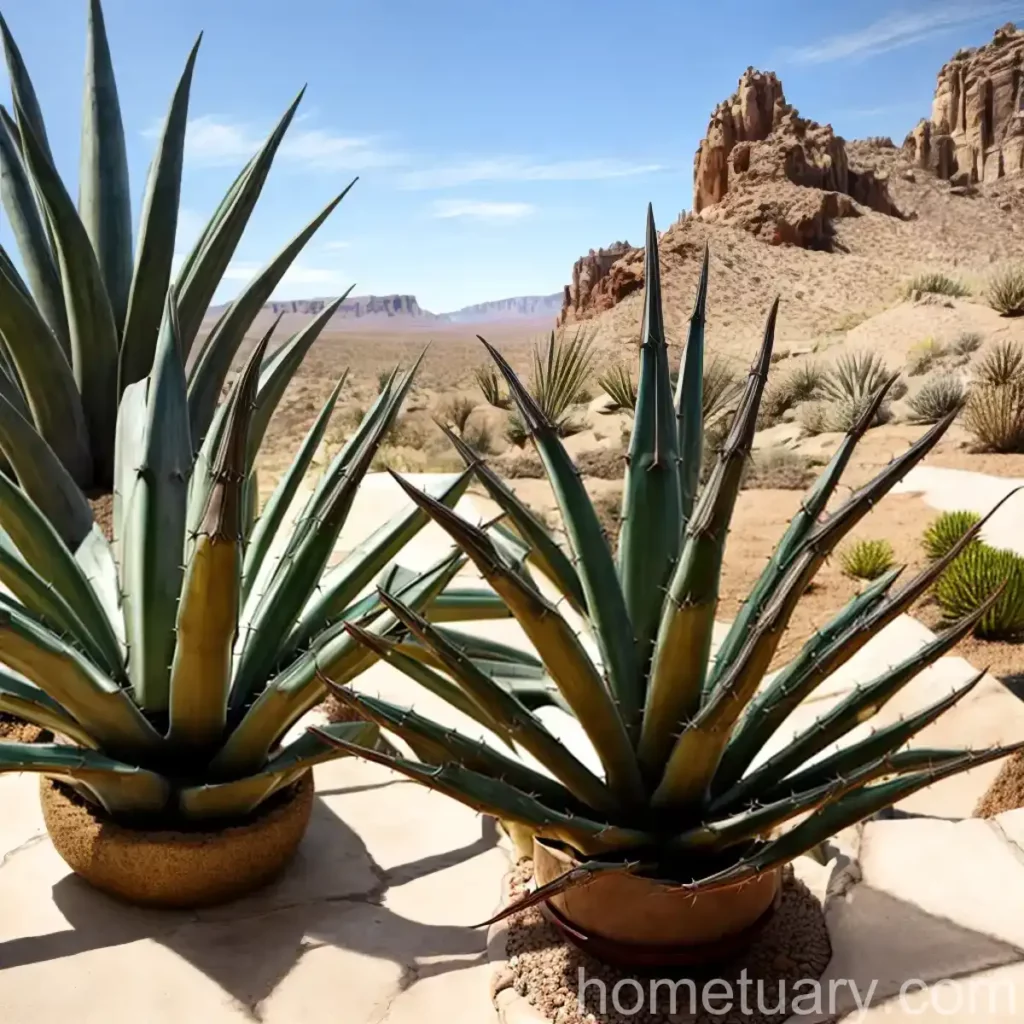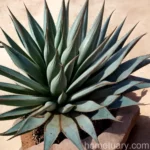Century Plant (Agave schidigera ‘Shira-ito-no-ohi’)
In the world of plants, the Agave genus is known for its striking appearance and versatility. One prominent member of this genus is the century plant, scientifically known as Agave schidigera ‘Shira-ito-no-ohi’. This remarkable plant has captured the interest of plant enthusiasts and researchers alike due to its unique characteristics, cultural significance, and diverse uses.
What is the Century Plant (Agave schidigera ‘Shira-ito-no-ohi’)?
The century plant, a cultivar of Agave schidigera known as ‘Shira-ito-no-ohi’, is a stunning succulent that belongs to the Asparagaceae family. It is native to Mexico and is renowned for its remarkable features, making it a popular choice for arid and semi-arid landscaping and gardening. The common name “century plant” often leads to misconceptions about its lifecycle. Contrary to popular belief, the plant typically blooms after 10 to 30 years, not a century as the name suggests.
Key Takeaways
- Scientific Name: Agave schidigera ‘Shira-ito-no-ohi’
- Common Name: Century plant
- Family: Asparagaceae
- Origin: Mexico
- Blooming Period: 10 to 30 years
This blog post will delve into various aspects of the century plant, including its culture, uses, growth requirements, popular varieties, common diseases, and essential tips for cultivating and maintaining this remarkable succulent.
Culture
Culturally, the century plant holds significance in various traditions, particularly among the indigenous communities of Mexico. It has been utilized for centuries for its medicinal properties, as well as in the production of fibers and alcoholic beverages. The agave plant, including the century plant, holds immense cultural value and has been an integral part of the Mexican heritage for generations.
Uses
The century plant, like many species of Agave, offers a multitude of uses. It is valued for its ornamental beauty in landscaping and gardening, while also serving practical purposes such as fiber production, particularly in the form of sisal. Additionally, certain species within the Agave genus, including the century plant, are used in the production of alcoholic beverages such as tequila and mezcal, contributing significantly to the economy of Mexico.
Water
The century plant is well-adapted to arid environments and has low to moderate water requirements. It is important to allow the soil to dry out between waterings to prevent issues such as root rot and other water-related problems. Once established, the century plant can withstand periods of drought, making it an excellent choice for water-wise landscaping.
Sunlight
As a sun-loving succulent, the century plant thrives in full sun to partial shade. When grown in optimal sunlight conditions, it exhibits vibrant growth and maintains its characteristic symmetry.
Fertilizer
Fertilization needs for the century plant are minimal. A well-draining soil mix with organic matter can provide sufficient nutrients for the plant. However, if the plant shows signs of nutrient deficiency, a balanced, diluted fertilizer can be applied during the growing season.
Soil
The century plant prefers well-draining, sandy soil to mimic its natural habitat. It is essential to avoid overwatering, as waterlogged soil can lead to root rot. Adding pumice or perlite to the soil mix can enhance drainage and prevent moisture-related issues.
Pruning
Pruning requirements for the century plant are minimal. Dead or damaged leaves can be removed as needed to maintain the plant’s appearance and health. It is essential to use sharp, clean tools to minimize the risk of disease transmission.
Propagation
Propagation of the century plant can be achieved through offsets, also known as “pups”, which are the small plantlets that develop around the base of mature plants. These pups can be carefully removed and replanted to create new specimens. Additionally, the century plant can be propagated from seeds, although this method requires patience due to the plant’s relatively slow growth rate.
Container Popularity
Agave plants, including the century plant, are popular choices for container gardening. Their striking appearance and low-maintenance nature make them ideal for adding visual interest to patios, balconies, and indoor spaces. When grown in containers, it is crucial to use well-draining soil and provide ample sunlight to promote healthy growth.
Container Common Diseases
Disease diagnosis for container-grown century plants primarily involves monitoring for signs of overwatering and root rot. Additionally, pests such as mealybugs and scale insects can infest container-grown plants, requiring prompt intervention to prevent damage.
Common Pests
The century plant is relatively resistant to pests and diseases, primarily due to its adaptations to arid environments. However, occasional pest issues may arise, particularly in instances of stress or suboptimal growing conditions. Common pests that could affect the century plant include agave snout weevils, scale insects, and aphids.
Botanist’s Tips
- Optimal Drainage: Ensure the soil provides excellent drainage to prevent waterlogging, which can be detrimental to the century plant’s health.
- Adequate Sunlight: Position the plant in a location that receives ample sunlight to promote robust growth and vibrant foliage.
- Minimal Watering: Practice restraint when watering the century plant, allowing the soil to dry out between waterings to prevent root-related problems.
Fun Facts
- The century plant is named for its infrequent blooming period, which occurs approximately every 10 to 30 years, rather than a century as the name suggests.
- Agave plants, including the century plant, have been historically crucial to the production of tequila, a renowned Mexican spirit.
Links to External Resources
To further explore the world of century plants, consider the following external resources:
In conclusion, the century plant (Agave schidigera ‘Shira-ito-no-ohi’) stands as a captivating example of the unique and diverse plant life found within the Agave genus. Its cultural significance, ornamental appeal, and practical uses make it a noteworthy addition to gardens, landscapes, and botanical collections. By understanding and embracing its distinct growth requirements and characteristics, plant enthusiasts can fully appreciate the beauty and resilience of this remarkable succulent.
Keywords: Agave century plant, Agave schidigera, Shira-ito-no-ohi, Agave plant, Century plant benefits, Agave plant care, Agave varieties, Agave succulent, Agave plant uses, Agave plant cultivation, Agave plant characteristics, Agave plant species, Agave plant facts, Agave plant history, Agave plant symbolism, Agave plant gardening, Agave plant landscaping, Agave schidigera plant, Shira-ito-no-ohi plant, Agave schidigera ‘Shira-ito-no-ohi’ care, Agave schidigera ‘Shira-ito-no-ohi’ characteristics, Agave schidigera ‘Shira-ito-no-ohi’ cultivation, Agave plant uses in gardens, Agave plant common names, Agave plant propagation, Agave plant requirements, Agave plant adaptability, Agave plant water needs, Agave plant soil requirements, Agave plant climate preference, Agave plant sun exposure, Agave plant container gardening, Agave plant drought tolerance, Agave plant pests and diseases, Agave plant medicinal uses, Agave plant traditional uses, Agave plant ecological importance, Agave plant wildlife value, Agave plant pollination, Agave plant seed production, Agave plant habitat, Agave plant sustainable gardening, Agave plant landscaping ideas, Agave plant unique features, Agave plant aesthetic appeal, Agave plant companion plants, Agave plant indoor cultivation, Agave plant outdoor cultivation, Agave plant natural remedies, Agave plant environmental benefits















